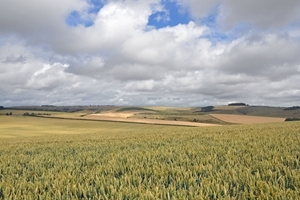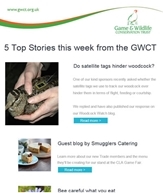 By Howard Davies, Chief Executive, The National Association for Areas of Outstanding Natural Beauty
By Howard Davies, Chief Executive, The National Association for Areas of Outstanding Natural Beauty
As Chief Executive of a small charity I enjoy my work. Nothing unusual about that, you might think.
I work with the UK’s Areas of Outstanding Natural Beauty: special landscapes designated for their national importance. These are not parks, but living, working landscapes, whose special qualities owe their existence, in the main, to the endeavours of people.
Many AONBs owe their special qualities to historical land management associated with shooting and, to a lesser extent, fishing: the sweeping woodlands of the Clwydian Range and Dee Valley, the chalk streams of Cranborne Chase and the Chilterns, the patchwork of heather moorland in the North Pennines. Understanding historic game management is an important key to unlocking the past.
AONB partnerships have, for decades, promoted an approach to landscape management that depends on the engagement and involvement of farmers and land owners. They have also focused on whole landscapes rather than taken a ‘nature reserve’ type approach.
This, we believe, has been successful. We are pleased to see this landscape approach now echoed in emerging policy across the UK and heartened to see the farmer-led approach adopted in the Nature Improvement Area in the Marlborough Downs.
This approach, championed and supported by the GWCT, has given us a glimpse of what future nature conservation must look like – bottom-up, collaborative, with clear leadership, supported by access to the best science and evidence.
Britain’s approach to the environment is rapidly evolving, whether that is driven by the need for a more sustainable economy, a better quality of life, or just the pressing need to stop the further loss of wildlife. Whatever the reason, getting it right is more important now than ever.
You only have to look at the latest State of Nature Report to understand that, despite our best efforts, we are still not managing to halt the decline in wildlife. You might argue that we can do without the richness of wildlife that our grandparents enjoyed, but if only as indicators of wider environmental health we should take notice.
The environment is where we live and the place that supports us. It gives us our food, our water, our building materials, and is often the place we go to for rest and relaxation. We ignore the warning signs at our peril.
Managing our environment, and our impact upon it, means solving complex problems, many of which we can only tackle by working together; sharing information, learning from one another, and inspiring people to take action.
There are additional challenges too. Whether you voted to leave the EU or not, we are now facing an important task – devising our own, home-grown legislation that responds to our needs in our places to suit our circumstances. To do this successfully we will need to work together, share our evidence, experience and knowledge, and really listen to each other.

Part of the thinking behind the AONB Family’s Outstanding Week, which starts this weekend and runs for 10 days, is to get people out into our outstanding landscapes to see the work that is being done and show everyone what’s going on. See www.landscapesforlifeevents.org.uk for an event near you.
 Free weekly newsletter
Free weekly newsletter
Stay updated and get all the latest GWCT blog updates and news delivered straight to your inbox each week.
Sign up FREE to the Weekly GWCT Newsletter >